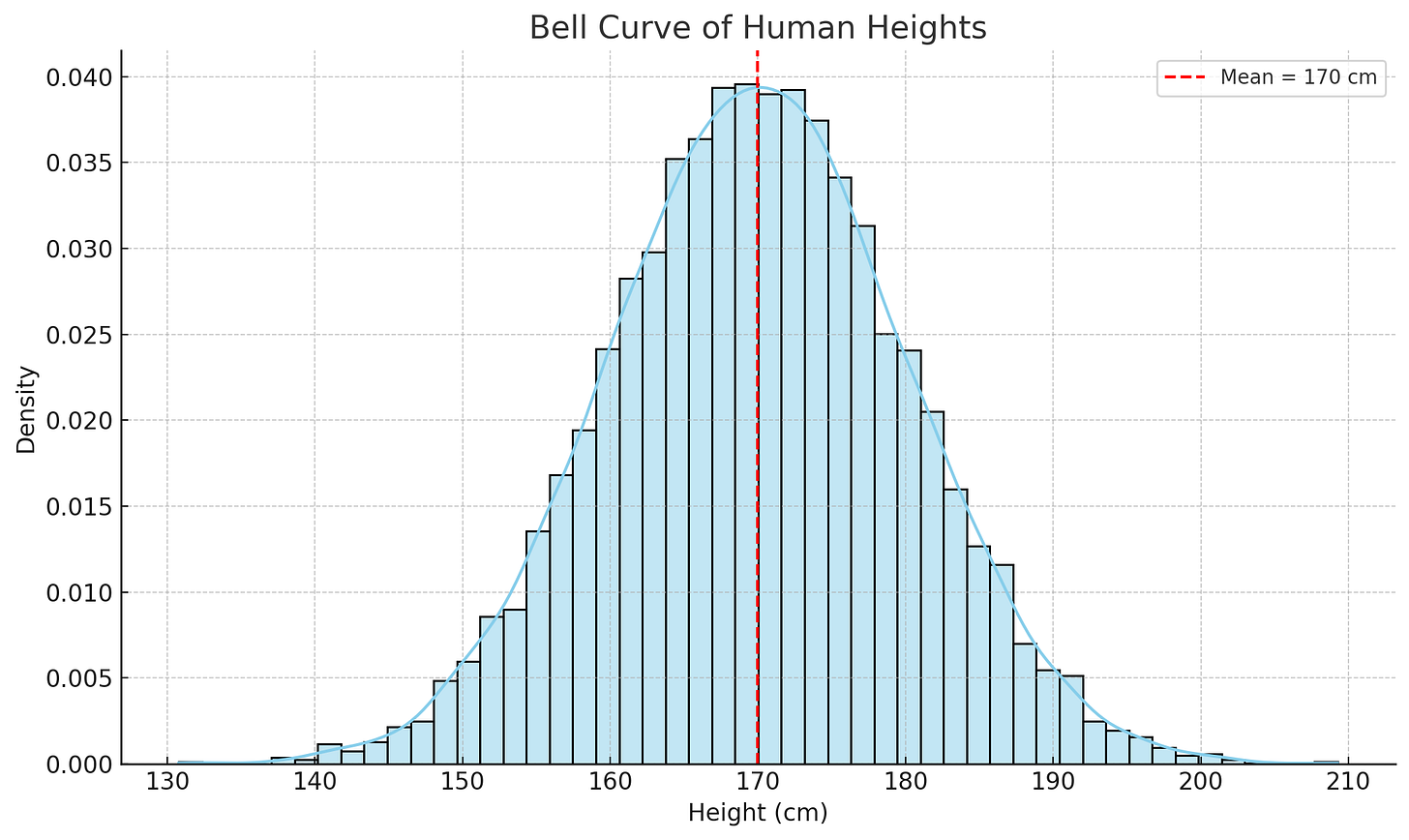The first word is always the hardest.
I've lost count of how many times I procrastinated until I found the perfect first word and sentence to write.
Time wasted.
Moral deflated.
The struggle is especially real when everyone stresses how vital your hook is.
You've heard, "The hook is everything."
But what if your content's fate follows a law bigger than any hook - a statistical distribution?
Like most people's heights, they follow a normal distribution—a bell curve is where most people's heights fall in the middle, and very few people are exceptionally tall or short.
So, what's the statistical distribution for your content?
In this article, I will walk you through the myth behind content creation and what it takes to take off your content.
So, the next time you hear algorithm hacking tips, you know whether to listen.
What's 20% 80% Power Law?
The law behind content success is more prevalent than you think.
You may have heard of it way too many times in your life.
80% of the sales come from 20% of the product.
80% of your results come from 20% of the actions.
80% of the views of the content come from 20% of the content.
Not all actions are equal, but every action helps accumulate the ultimate 20% that makes the difference.
Take an example from a YouTuber who has been actively posting since 2021.
I ranked all the video views on the axis from the highest to the lowest. The first 18 videos had the highest views, and the views dropped off dramatically after the first 18 videos.
After calculation, this channel's top 20 videos generated nearly 89% of its total views.
Your top 20% doesn't come from thin air—it comes from consistently achieving the first 80%.
It is an accumulation of 100 pieces of content that could give you the 20% content that takes off.
How long does it take to take off your content?
Before I started my own business, I read a book called Million Dollar Weekend.
In his book, Noah Kagan said:
"Before you quit something, do it 100 times and see what happens".
Before knowing the power law, I thought it was another motivation cliche.
However, it is profoundly backed by statistics.
Using the YouTuber's example, the channel started hitting its top 20% content in 2022. With its growth, the channel is experiencing a breakthrough-hitting growth spurt with a more consistent top 20%.
But it didn't happen overnight.
It takes consistent effort to post to get to the top 20%, with the experimental 80%.
Without the seem-not-working 80%, there is no chance for the top 20% to appear.
That's why it is essential to do something 100 times to maximize the chance that the top 20% will appear.
Hacking the algorithm by increasing the reps
Now we know it takes at least 100 reps to take off your content; what does it mean when you hear hacking the algorithm?
The Youtuber's example shows that the channel's growth spurt comes after its consistent effort.
That's when you can hack the algorithm to double down on what works from past experiments and experience the content growth spurt.
Hacking the algorithm is doing this by knowing what already works for your content and doubling down.
But here comes the reality check: learning how to hack the algorithm doesn't replace the reps you need to put in to test it out on the market.
You can calculate your optimal posting schedule based on your first hit content to fast-track your trajectory.
Given the Youtuber's example, its hit rate is 20%, which means every one in five posts will be a hit.
Based on this rate, posting once a week will take nearly six weeks to get a hit piece of content.
However, increasing the content frequency to five times a week will only take one week to get a hit.
Final thoughts
Like the power law, it takes 100 reps to get the top 20%.
We can't change the law, but we can increase our odds of hitting the top 20%.
What would change if you treated your next 80 posts as experiments, not failures?
Want to help to uncover your content's 20% that drives 80% of your growth?
I help content-driven businesses turn scattered metrics into growth decisions using dashboards, survival analysis, and Bayesian testing.
Let's find the data-backed path to your next content breakthrough -get in touch or drop me a message.







